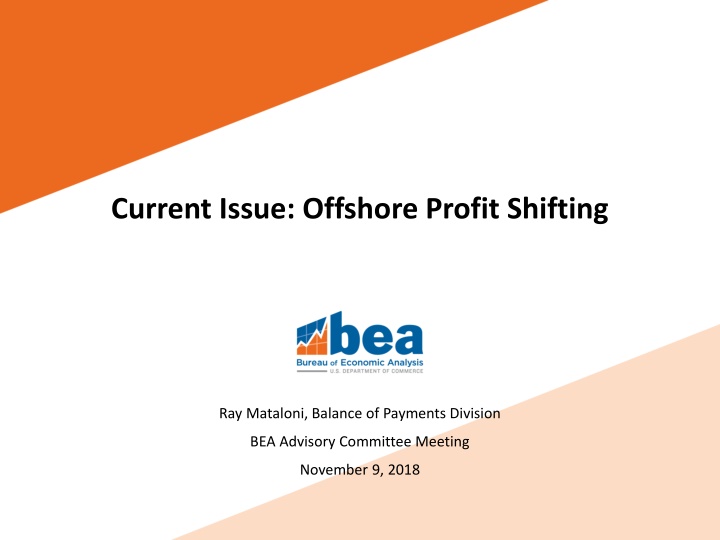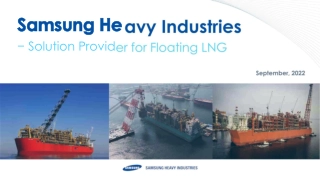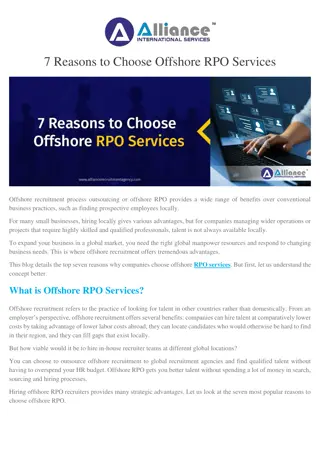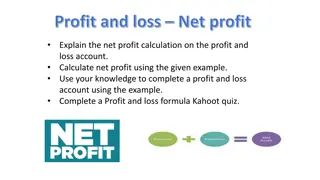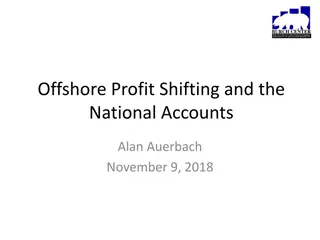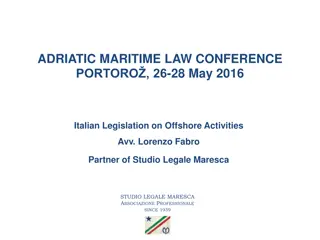Current Issue: Offshore Profit Shifting
The impact of offshore profit shifting on domestic productivity measurements and multinational profit allocation across countries. Learn about formulary apportionment, cost-sharing agreements, and the research findings in this insightful presentation.
Download Presentation

Please find below an Image/Link to download the presentation.
The content on the website is provided AS IS for your information and personal use only. It may not be sold, licensed, or shared on other websites without obtaining consent from the author.If you encounter any issues during the download, it is possible that the publisher has removed the file from their server.
You are allowed to download the files provided on this website for personal or commercial use, subject to the condition that they are used lawfully. All files are the property of their respective owners.
The content on the website is provided AS IS for your information and personal use only. It may not be sold, licensed, or shared on other websites without obtaining consent from the author.
E N D
Presentation Transcript
Current Issue: Offshore Profit Shifting Ray Mataloni, Balance of Payments Division BEA Advisory Committee Meeting November 9, 2018
Statutory corporate tax rates, 2017 Source: OECD Tax Database (http://www.oecd.org/tax/tax-policy/tax-database.htm) 2
Other ACM presentations on globalization Date Topic Nov 2016 Trade in services initiative Nov 2015 New measures of the impact of globalization New FDI data on greenfield and acquisitions Nov 2014 Factory-less goods manufacturing, global value added chains May 2014 The comprehensive restructuring of the international economic accounts May 2013 Trade in value added May 2011 Global manufacturing and measurement issues raised by the iPhone Nov 2010 Measurement issues arising from the growth of globalization May 2009 Measuring the rapidly changing economy international aspects 4
Outline How large is profit shifting? Formulary apportionment Which accounts are affected by profit shifting? Applying formulary apportionment across the U.S. economic accounts How do multinationals shift profits? Cost-sharing agreements 5
How large is profit shifting? Research question: How is measured U.S. labor productivity affected by re-apportioning U.S. multinationals global profits across countries by the scale of their local factors of production? Paper: Offshore Profit Shifting and Domestic Productivity Measurement By Fatih Guvenen, Raymond Mataloni Jr., Dylan Rassier and Kim Ruhl 6
A hypothetical re-apportionment example Under re-apportionment Under separate accounting $ = U.S. MNE measured profits from current production = U.S. MNE factors of production 7
Re-apportionment of U.S. MNE global profits 2012 ($ billions) 8
Productivity results Additions to Average Annual Productivity Growth in 2000-2008 0.7 0.6 0.5 Percent 0.4 0.3 0.2 0.1 0 All industries R&D-intensive industries Other industries Reduces, but does not eliminate, the slowdown in measured U.S. labor productivity 9
Which accounts are affected? Research question: How do the results from the previous paper affect key published aggregates in the U.S. economic accounts? Paper: Multinational Profit Shifting and Measures throughout Economic Accounts By Jennifer Bruner, Dylan Rassier and Kim Ruhl 10
Some illustrative results for 2014 Under reapportionment Some profits currently recorded here Consumption + Investment GDP + Receipts of income (on direct and portfolio investment) from ROW + Government spending + EXports Are moved here - Payments of income to ROW - IMports U.S. GNP U.S. GDP Rate of return on outward direct investment falls from 8.5% to 3.5% Level of GDP increases $0.3 trillion, or 1.5% Trade deficit expressed as a percent of GDP falls from -2.8% to -1.3%. 11 ROW = Rest of world
How do multinationals shift profits? Research question: Have U.S. multinationals used cost sharing agreements to transfer intellectual property and its associated profits across countries? Note: This is not an unconstrained optimization the IRS is watching! Paper: Strategic movement of intellectual property within U.S. multinational enterprises By Derrick Jenniges, Raymond Mataloni Jr., Sarah Stutzman and Yiran Xin 12
Cost-sharing agreement (CSA) definition From U.S. Tax Code 1.482-7: An agreement whereby the parties agree to share the costs of developing one or more intangibles in proportion to the share of the reasonably anticipated benefits from exploiting the intangibles assigned to them under the agreement 13
How CSAs work Shared IP ownership 1. U.S. multinational enterprise (MNE) conducts R&D in the United States 3. By paying into the R&D costs, affiliate earns right to exploit IP assets in certain markets if the R&D is successful 2. Parent enters into cost sharing agreement with foreign affiliate Each party assigned rights to portion of worldwide sales Affiliate payments to parent recorded as U.S. exports of R&D services R&D services exports CSA payment Should be valued using arm s length standard 14
CSA example 1. U.S. parent conducts $500 of R&D in the USA 2. Irish affiliate pays 50% of the R&D costs to its parent giving it rights to non-U.S. revenue if R&D is successful. Affiliate share of costs is proportional to its expected share (50%) of resulting worldwide revenue $250 U.S. export of R&D services 3. R&D is successful and ownership of the resulting IP asset is shared between the U.S. parent and the Irish affiliate 4. Once the asset is created, it generates $2,000 in U.S. revenue and $3,000 in foreign revenue U.S. FDI income receipts are $3,000 (assuming Irish affiliate costs are zero) U.S. exports of R&D services are zero U.S. exports of IP services are zero 5. Had the parent retained all rights, U.S. exports of IP services would have been $3,000 15
Empirical study Data: 198 U.S. MNEs in R&D intensive industries, 2006-2015 Research question: Is the profitability difference between a U.S. parent and its foreign affiliates explained by engaging in CSAs? Key finding: Engaging in a CSA raises the profitability of affiliates relative to that of their parents, particularly for affiliates in certain low tax countries. 16
Summary Profit shifting by U.S. multinationals has affected key measures of economic activity At least under the prior U.S. corporate tax regime Estimates of its impact suggest that this activity helps explain some longstanding puzzles in U.S. economic statistics Slowing rate of growth in U.S. labor productivity Magnitude of U.S. trade deficits Higher rate of return on outward U.S. direct investment than inward U.S. direct investment 17
Related studies by BEA guest researchers The Demand for Tax Haven Operations By Mihir A. Desai, C. Fritz Foley, and James R. Hines, Jr. Journal of Public Economics 90, no. 3 (February 2006): 513-531 Conflicting Transfer Pricing Incentives and the Role of Coordination By Jennifer L. Blouin, Leslie A. Robinson, and J. Seidman Contemporary Accounting Research 35, no. 1 (Spring 2018): 87-116 18
Discussion questions Is profit shifting within MNEs an important research topic for BEA? If so, Are there related questions that we should explore? Are the studies worth repeating under the new tax law? How can BEA better inform data users of the effects of globalization? GDP by firm type (e.g. MNE/non-MNE)? Feature GDP and GNI? Trade in value added? 19
